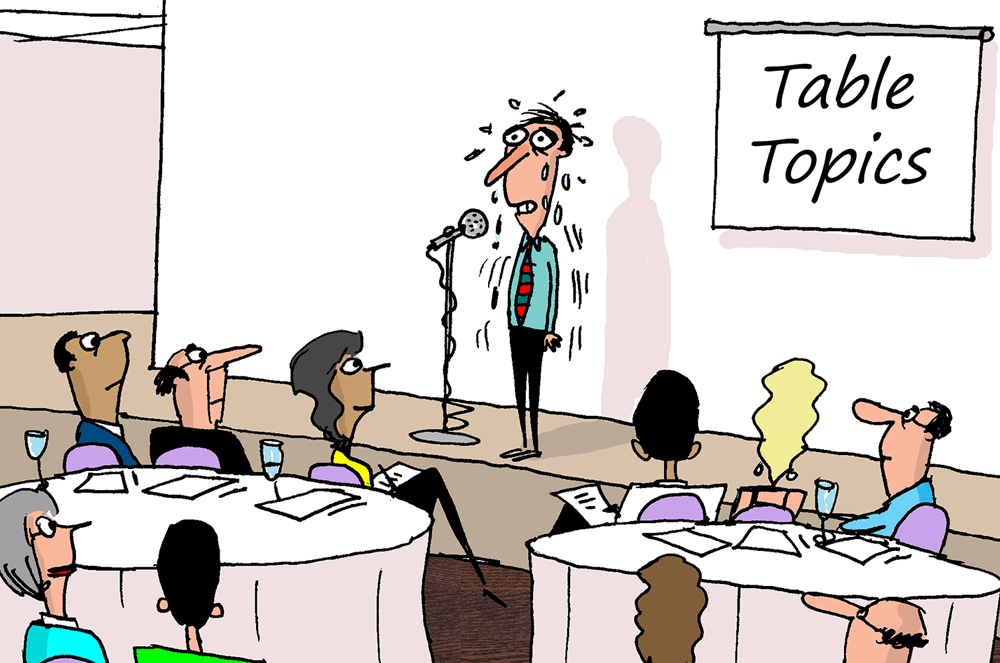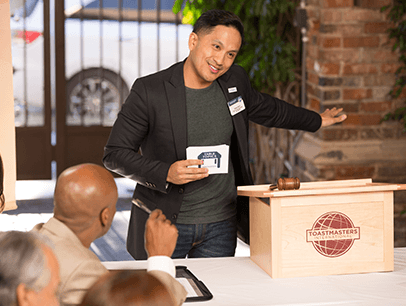
This month, we discuss two important topics related to Toastmasters: Table Topics and the Pathways learning experience.
How can I answer a Table Topics question, even though I know very little about the topic?—Wurile; Beijing, China
This is the real challenge of Table Topics, but there are several approaches you can take.The first is to shift the question. Almost all clubs I have belonged to follow the informal Toastmasters rule that says, “If you don’t like the question, answer a different one.” That could be one that has previously been asked or you could make up your own.
Now some people say the real purpose of Table Topics is to get experience answering the question you are asked. I would contend, however, that the real purpose is to give you practice constructing a well-organized speech on the spur of the moment.
For example, Table Topics should mirror real life as much as possible. If you were in a meeting with your boss and were asked a question, you would probably know something about the topic. You would just need to know how to craft your response clearly on the spot.
There is another approach I employ when appropriate: Make something up. This is a great opportunity to work on your creativity skills.
I was once asked to discuss a television program I had never heard of. I took the title of the program, made an assumption of what it was about (I was way off base), and made something up.
You could also use this situation as an opportunity to work on your humor. In that same meeting, the word of the day was “cogent.” I started off my answer like this, “Let me ask you a question. If Kevin (another club member) and I were working on a project together and, by some stretch of the imagination, you could call us gentlemen, would that make us co-gents?” It caught them by surprise and brought the house down. Oh, and another benefit: It took up time, so I didn’t have to talk as much about the television show. Whew!
If I am struggling in my current path in the Pathways learning experience, what are some ways I can push through?The key question is: Why are you struggling? Is it that you don’t like your path? Or the project? Do you have a hard time seeing how it relates to your goals or needs? Or maybe you have just lost momentum.
When I have slowed down in a path, it is usually because I am not that excited about the next project. It just sits there and stares at me, taunting me, laughing at me.
In order to motivate yourself, can you configure the project to fit something more to your liking? For example, one club member likes to write and deliver motivating stories. So as much as he can, he designs his projects around a story. Talk with your Vice President Education to see what you can work out.
If you don’t like your path, is there another path you might like better? Although, it’s important to recognize that there are a lot of commonalities between the paths.
And sometimes you just have to quit procrastinating and do it. After all, you never know what you might learn. Toastmasters isn’t designed to be easy. It is designed to challenge you to grow.
Lastly, if you have just lost momentum, consider why you joined Toastmasters in the first place. Maybe you have to get back to that.
I know there are some members who blitz through every project like it is nothing. That’s not me. But when I hit a wall, I just look for a way over it and keep on running. I hate roadblocks and the sooner I put them behind me, the better.
EDITOR’S NOTE: If you have a question for The Answer Man, email it to magazine@toastmasters.org for a chance to be featured in an upcoming column.
Questions are occasionally edited for clarity and brevity.
Bill Brown, DTM is a speech delivery coach in Gillette, Wyoming. He is a member of Energy Capital Toastmasters in Gillette. Learn more at billbrownspeechcoach.com.



 Previous
Previous

 Previous Article
Previous Article

